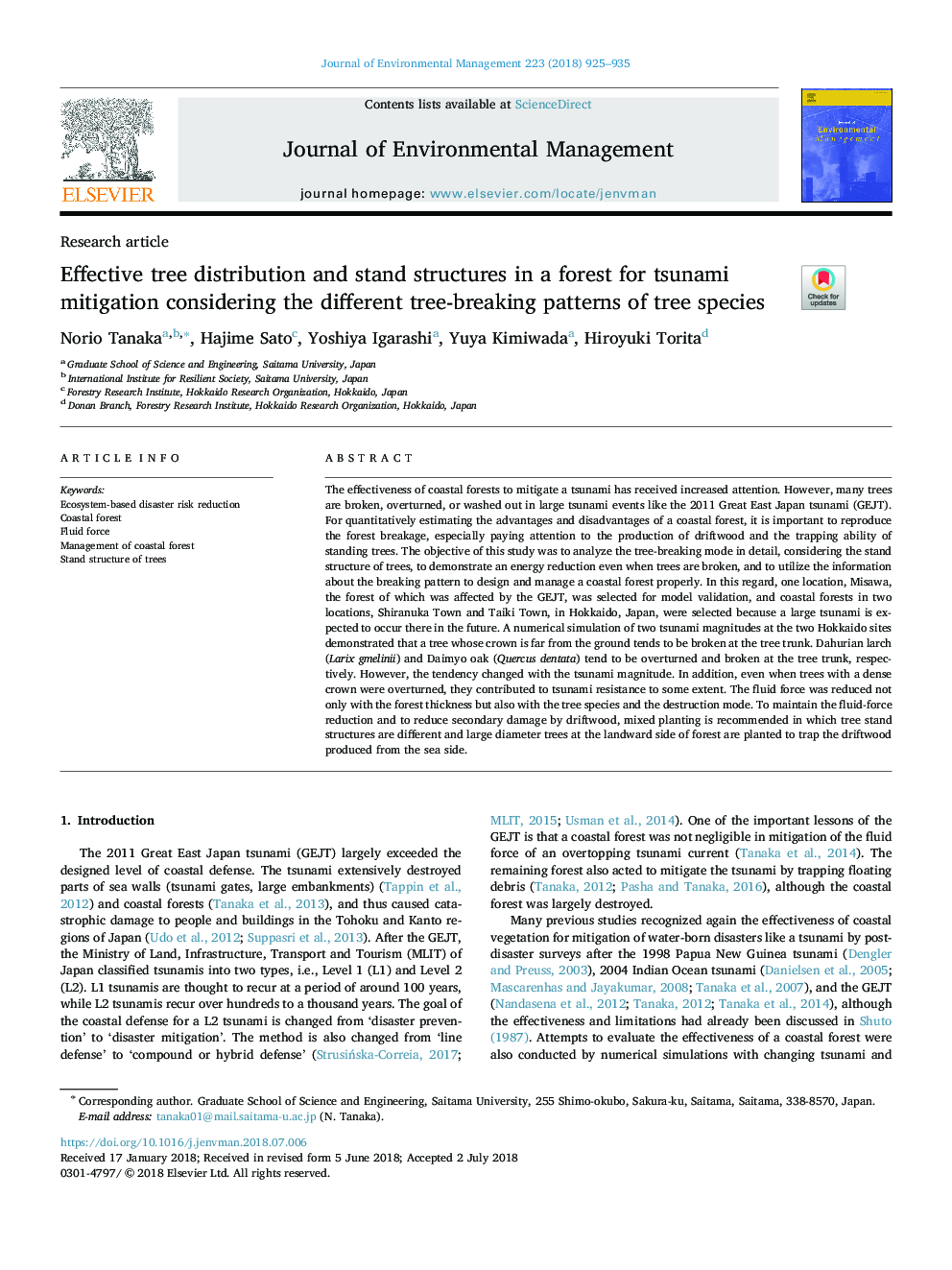| کد مقاله | کد نشریه | سال انتشار | مقاله انگلیسی | نسخه تمام متن |
|---|---|---|---|---|
| 7476297 | 1485195 | 2018 | 11 صفحه PDF | دانلود رایگان |
عنوان انگلیسی مقاله ISI
Effective tree distribution and stand structures in a forest for tsunami mitigation considering the different tree-breaking patterns of tree species
ترجمه فارسی عنوان
توزیع درختی موثر و ساختارهای ایستاده در یک جنگل برای کاهش سونامی با توجه به الگوهای شکستن درخت درختان درخت
دانلود مقاله + سفارش ترجمه
دانلود مقاله ISI انگلیسی
رایگان برای ایرانیان
کلمات کلیدی
کاهش خطر بروز فاجعه بر اساس اکوسیستم، جنگل ساحلی، نیروی سیال، مدیریت جنگل ساحلی، ساختار پایه درختان،
موضوعات مرتبط
مهندسی و علوم پایه
مهندسی انرژی
انرژی های تجدید پذیر، توسعه پایدار و محیط زیست
چکیده انگلیسی
The effectiveness of coastal forests to mitigate a tsunami has received increased attention. However, many trees are broken, overturned, or washed out in large tsunami events like the 2011 Great East Japan tsunami (GEJT). For quantitatively estimating the advantages and disadvantages of a coastal forest, it is important to reproduce the forest breakage, especially paying attention to the production of driftwood and the trapping ability of standing trees. The objective of this study was to analyze the tree-breaking mode in detail, considering the stand structure of trees, to demonstrate an energy reduction even when trees are broken, and to utilize the information about the breaking pattern to design and manage a coastal forest properly. In this regard, one location, Misawa, the forest of which was affected by the GEJT, was selected for model validation, and coastal forests in two locations, Shiranuka Town and Taiki Town, in Hokkaido, Japan, were selected because a large tsunami is expected to occur there in the future. A numerical simulation of two tsunami magnitudes at the two Hokkaido sites demonstrated that a tree whose crown is far from the ground tends to be broken at the tree trunk. Dahurian larch (Larix gmelinii) and Daimyo oak (Quercus dentata) tend to be overturned and broken at the tree trunk, respectively. However, the tendency changed with the tsunami magnitude. In addition, even when trees with a dense crown were overturned, they contributed to tsunami resistance to some extent. The fluid force was reduced not only with the forest thickness but also with the tree species and the destruction mode. To maintain the fluid-force reduction and to reduce secondary damage by driftwood, mixed planting is recommended in which tree stand structures are different and large diameter trees at the landward side of forest are planted to trap the driftwood produced from the sea side.
ناشر
Database: Elsevier - ScienceDirect (ساینس دایرکت)
Journal: Journal of Environmental Management - Volume 223, 1 October 2018, Pages 925-935
Journal: Journal of Environmental Management - Volume 223, 1 October 2018, Pages 925-935
نویسندگان
Norio Tanaka, Hajime Sato, Yoshiya Igarashi, Yuya Kimiwada, Hiroyuki Torita,
